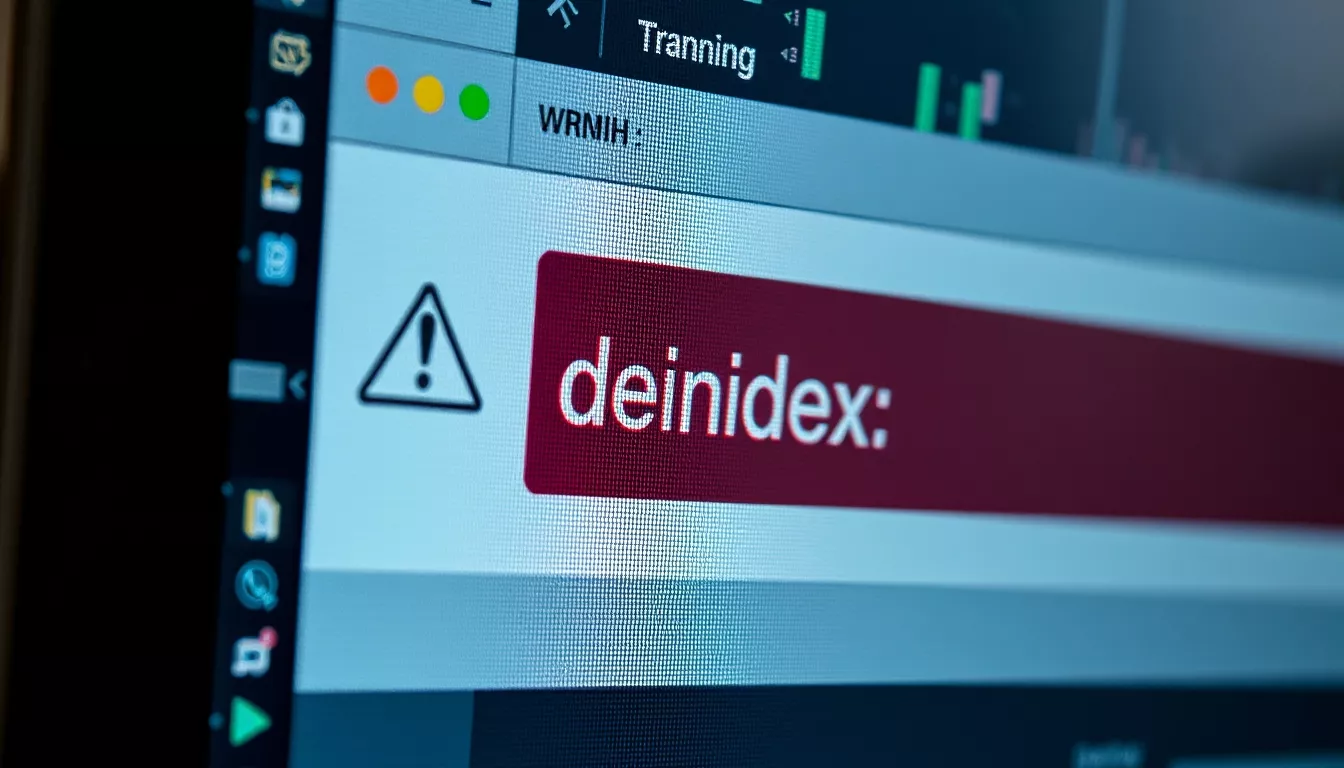In the digital competition arena, where visibility equates to survival, the threat of deindexing looms large over U.S. businesses.
This silent disruptor can slash organic traffic, erode SEO investments, and tarnish brand reputation, all while companies scramble to adapt to ever-evolving search engine algorithms. As the March 2024 Google Core Update showed, even well-established firms are not immune to the financial freefall triggered by disappearing from search results.
Understanding the causes and crafting a robust recovery strategy is no longer optional—it’s essential for maintaining a competitive edge in the digital marketplace.

Deindexing: Causes and Impact

Deindexing refers to the removal of web pages from a search engine’s index, drastically reducing visibility and organic traffic. This is a significant threat in markets like the U.S., where online presence is crucial. Causes include manual penalties, algorithmic changes, and technical errors, such as black-hat SEO, content irrelevance, or incorrect robots.txt usage.
Addressing these causes is vital for businesses to prevent deindexing, ensuring sustained visibility and competitive edge in the digital landscape. Companies must stay vigilant and adapt their strategies to avoid falling victim to this invisible threat.
SEO Fallout: The Ripple Effect of Deindexing
Organic Traffic Decline

One of the most immediate consequences of deindexing is a sharp decline in organic traffic.
When pages are removed from a search engine’s index, they no longer appear in search results, leading to a sudden drop in site visits.
For businesses in the United States, where digital competition is fierce, this loss can translate to substantial financial setbacks. The March 2024 Google Core Update is a notable example, which resulted in significant losses for U.S. businesses.
This update aimed to improve search result relevance but inadvertently led to widespread deindexing, causing some companies to experience an estimated monthly loss of $446,552 in displayed advertising revenue.
Undoing SEO Progress

Deindexing can negate previous SEO investments, requiring additional time and resources to regain lost ground.
The removal of pages from search results nullifies efforts put into optimizing content and building backlinks. This challenge is particularly daunting in a competitive digital landscape, where regaining SEO traction involves facing increased competition and evolving search engine algorithms.
Businesses must heavily invest in restoring their rankings and traffic, which demands continuous adaptation and strategic SEO planning.
Brand Reputation at Risk

Deindexing can damage credibility and brand reputation by making a site appear unreliable.
This perception erodes customer trust, impacting loyalty and brand integrity.
A consistent online presence is crucial for maintaining a positive reputation in the digital marketplace.
Broader Implications of Traffic Disruption
Website Performance Decline
Reduced visibility from deindexing affects overall website performance, decreasing engagement and conversion rates, impacting key performance indicators (KPIs) like sales and lead generation.
U.S. businesses relying heavily on web traffic face severe financial repercussions when their pages are removed from search results.
|
Key Performance Indicator (KPI) |
Potential Impact Due to Deindexing |
|---|---|
|
Sales |
Significant decrease due to reduced site visits |
|
Lead Generation |
Lower lead acquisition from decreased visibility |
|
Conversion Rates |
Decline as fewer users engage with the site |
Link Integrity Issues

Impact on Internal and External Link Integrity
Deindexing can compromise both internal and external link integrity, resulting in broken links that deteriorate user experience and search engine rankings. Internal links, crucial for navigating a website and distributing link equity, become ineffective if the linked pages are deindexed.
Similarly, external links leading to a deindexed page can harm the referring site’s credibility and SEO.
This breakdown in link integrity underscores the importance of maintaining a healthy and indexable website structure, which is vital for both user satisfaction and search engine optimization.
Bouncing Back: Strategies for Deindexing Recovery
Identifying and Resolving Causes
Recovering from deindexing involves identifying and addressing root causes like technical errors or low-quality content. Resolving these issues promptly restores indexability, ensuring compliance with search engine guidelines.
This process often requires a thorough audit of the website’s structure, content quality, and technical SEO elements.
Reindexing and SEO Optimization

What steps can expedite the reindexing process?
After resolving issues, expedite reindexing via tools like Google Search Console. Intensified SEO efforts, including optimizing content, enhancing user experience, and building high-quality backlinks, are crucial for recovering lost rankings and traffic.
Businesses should focus on creating valuable, relevant content that aligns with user intent and search engine guidelines to improve their chances of swift reindexing.
Proactive Monitoring and Prevention
Regular website audits and monitoring prevent future deindexing.
Routine checks for broken links, proper redirects, and staying updated with algorithm changes safeguard online presence.
Implementing proactive SEO strategies and updating content are essential for maintaining visibility. Companies should consider using automated tools and setting up alerts to catch potential issues before they lead to deindexing.
Adapting to the Digital Landscape’s Shifts

The phenomenon of deindexing serves as a stark reminder of the volatile nature of digital visibility. As search engines continuously evolve, businesses must adapt to these changes to maintain their online presence.
Ongoing adaptation and vigilance in SEO practices are crucial for staying competitive in the dynamic market.
By understanding the causes and consequences of deindexing, businesses can proactively mitigate risks and ensure sustained visibility in the competitive U.S. market.
Maintaining robust SEO practices and regularly monitoring website performance are key strategies for safeguarding online presence.
As the digital landscape continues to evolve, businesses must be prepared to adapt quickly and implement effective strategies to recover from potential setbacks, ensuring long-term success and visibility in the digital arena.
